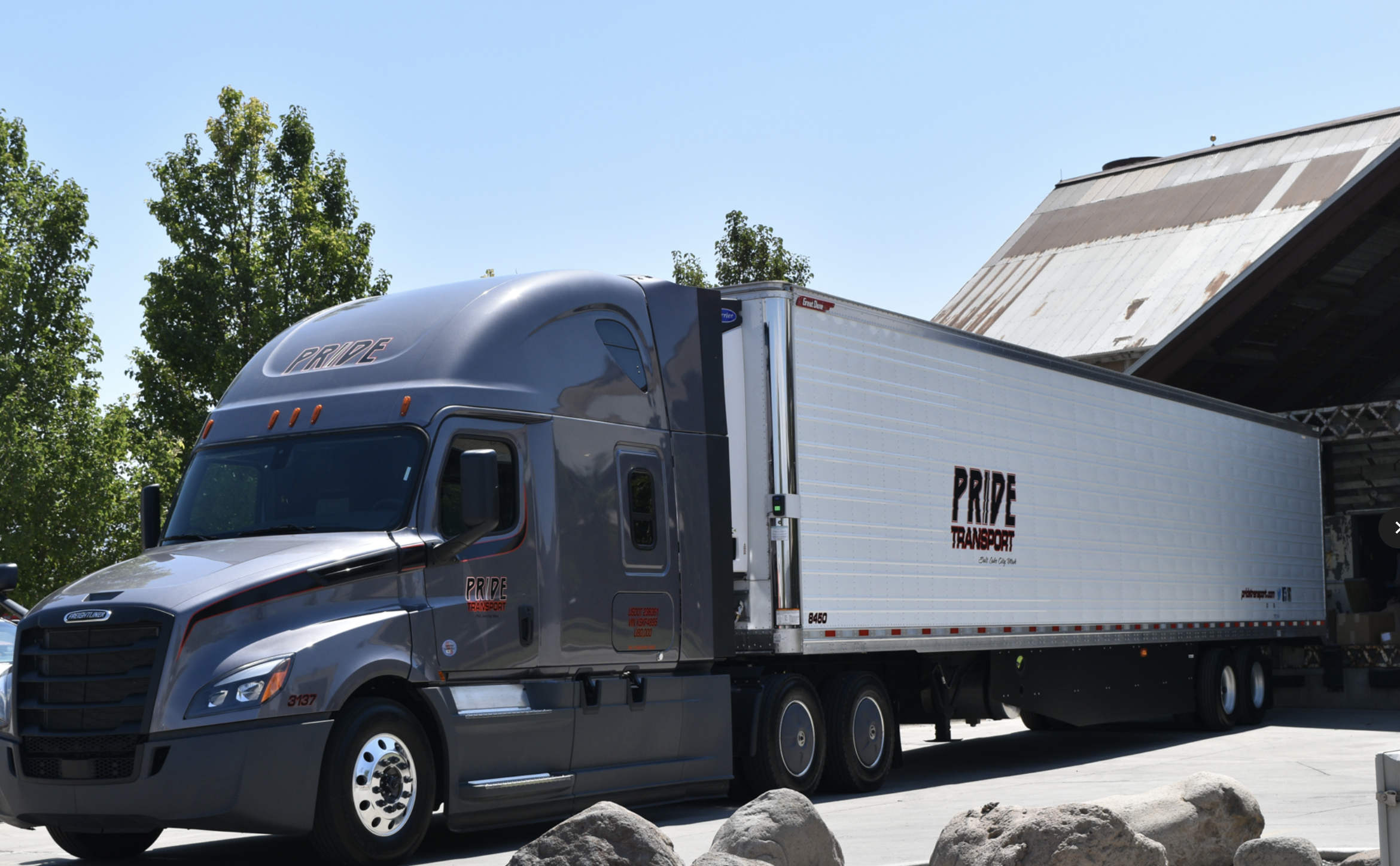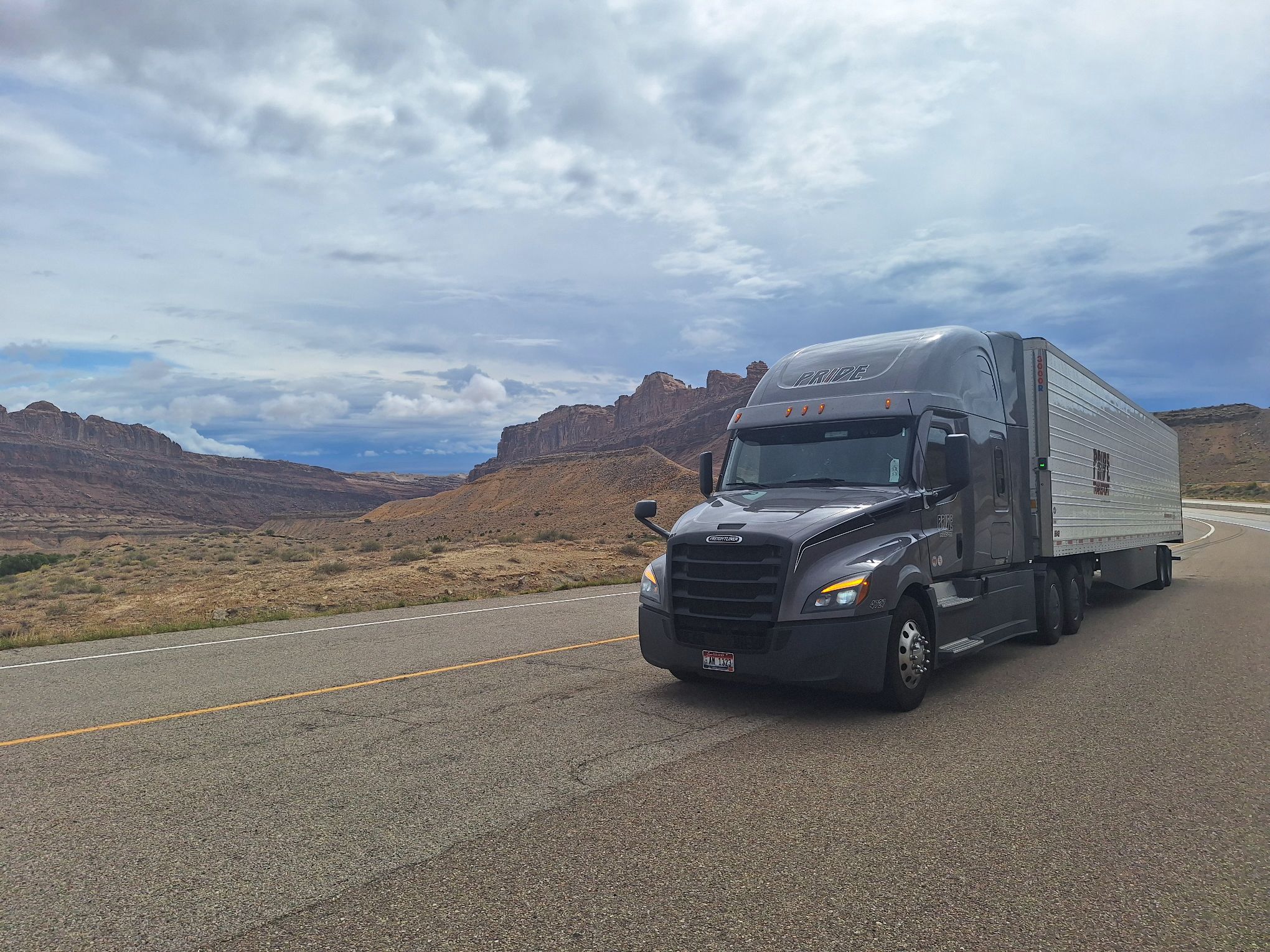by Pride Transport | Sep 03, 2024
The biggest responsibility of a truck driver’s job is to safely transport freight. But depending on how long a driver’s been in the industry, or the type of company they work for, they may not know how the cargo gets in the trailer to begin with. Do drivers always load the trailers, or never load them? Do drivers help to unload trailers at the docking area, or is that a separate job?
The truth is that a lot of factors determine whether or not drivers help with loading/unloading cargo. The situation can vary by industry, the type of cargo they’re moving, the routes they drive, and the facility the driver delivers to. Regardless of the combination, moving freight falls into three categories: touch, no touch, and drop-and-hook.
Touch freight delivery is straightforward: drivers help load and unload the trailers. With no-touch and drop-and-hook freight, drivers don’t physically move cargo on or off of the trailer, but even these categories are slightly different. Keep reading to learn more about no-touch freight processes, including the advantages and disadvantages of both.
What Is No Touch Freight?
Truck-driving job listings that include the term “no-touch” mean the driver isn’t responsible for loading or unloading cargo from the trailer. In a delivery scenario, the driver arrives at the loading dock and waits in the cab while warehouse workers or people contracted for the job move the freight. From there, any of the following can happen:
- The driver leaves with an empty trailer.
- The driver waits for the crew to reload with other cargo before driving to the next destination.
- The driver unhooks from the original trailer and takes another one that’s ready for delivery (more on that in a minute.)
Many truck drivers specifically look for no-touch freight jobs, which is why it’s often featured so prominently in job listings. Whether it’s the right type of job for you depends on which aspects of the job you consider to be benefits or drawbacks.
Advantages
Reduced physical strain. The most notable benefit of no-touch freight is that drivers don’t overexert themselves with strenuous labor. Regularly loading and unloading trailers can take its toll on even the healthiest drivers. Older drivers with physical limitations can successfully drive in no-touch freight jobs without reduced mobility negatively affecting their job performance.
Faster turnaround times. Compared to touch freight, no-touch freight is a faster process. You stay in the cab as workers take care of the cargo, so you’re ready to take off as soon as everything is loaded.
Fewer responsibilities during loading/unloading. If you’re a truck driver who helps move cargo, chances are you’ve also had to manage warehouse workers during the loading process. Physically managing freight while trying to explain the right process or correct behavior at the same time can feel overwhelming and frustrating. No-touch freight takes management out of your scope of responsibility.
Downsides
Limited control over loading times. No-touch freight drivers don’t have much control over the scheduling window they’re assigned. They need to be on-site at the designated time. Otherwise, they risk causing a backup or throwing off their own schedule, setting themselves up for potential delays going forward.
Potential delays. Drivers can be delayed if the facility has insufficient room for all incoming and outgoing trailers. And even if there’s room, there might not be enough workers on hand to efficiently load and unload every trailer within its designated time window.
Reliance on third parties for handling the cargo. You can’t always be sure that whoever is helping you will load cargo correctly or with the kind of care you expect. Hopefully, the workers loading and unloading your cargo are experts at their job, but this isn’t always the case.

What Is Drop-and-Hook Freight?
Drop-and-hook falls under the category of no-touch freight. Instead of waiting for the trailer to be loaded/unloaded upon arrival at a shipping point, the driver unhooks the trailer they arrived with and picks up a new one for the next leg of their trip. They can trade a fully loaded container for another loaded one, or swap out an empty trailer for one that’s loaded and ready for delivery.
In any of these situations, the driver doesn’t touch the cargo, though they are responsible for properly hooking and unhooking their trucks from the trailers.
Common drop-and-hook scenarios
Large distribution centers are likely to use drop-and-hook freight. This could be due to several different reasons:
- They ship at a high volume and have to move freight quickly.
- They want to avoid backups, which can happen with live loads, especially if the facility is understaffed.
- They have enough space and available trailers to preload containers without causing delays.
Facilities that ship loose items requiring extra time to load correctly may also choose a drop-and-hook process.
Advantages
Reduced wait times. Drop-and-hook is faster than other no-touch freight because the trailer is already loaded and waiting when the driver gets to the facility. The average wait time for a drop-and-hook load is often an hour or less. Depending on the cargo being loaded, and how smoothly operations are running, live loads can cost drivers three (or more!) hours waiting for their trailer to be ready.
Increased productivity. With limited wait times comes faster turnaround, meaning you’re back on the road sooner. Drivers can use this time to fit in more hauls if needed. At the very least, drivers benefit from a more consistent schedule and can develop a routine that allows them to make the most of their time.
More efficient use of driving hours and resources. The adage “time is money” is true in a lot of industries, but especially in freight transportation. The time drivers save by not waiting for live loads can be used to take on more jobs. Plus, drivers save on fuel by not idling for hours at a loading dock.
Potential challenges
Need for accurate communication and planning. Sometimes, the trailer you need isn’t easily accessible. Depending on the size of the facility and how they operate, your preloaded trailer could be blocked in by other trailers or stored off-site. Communication is key to ensuring you don’t unexpectedly run into delays.
Encountering damaged or improperly loaded trailers. Drop-and-hook freight relies on using equipment from other companies, which means you could take on a damaged or unwieldy trailer. You also have no control over how cargo was loaded and may not discover damaged freight until you arrive at your destination. The trailer could also be overloaded, which can cause issues or delays at the next weigh station.
Physical demands of hooking up trailers. Drop-and-hook freight doesn’t totally remove the need for physical labor. Safely and correctly hooking up a trailer takes time and can be difficult if the trailer is fully loaded. Finding someone to help you can lead to unanticipated delays.
Why Drivers Choose Pride
Finding the right truck-driving job can take time, especially when you want to make sure you know what to expect. At Pride Transport, we offer OTR and regional no-touch freight jobs so you can drive the routes suited to your preferences and needs. Take the next step in your journey and check out our driver jobs today!
